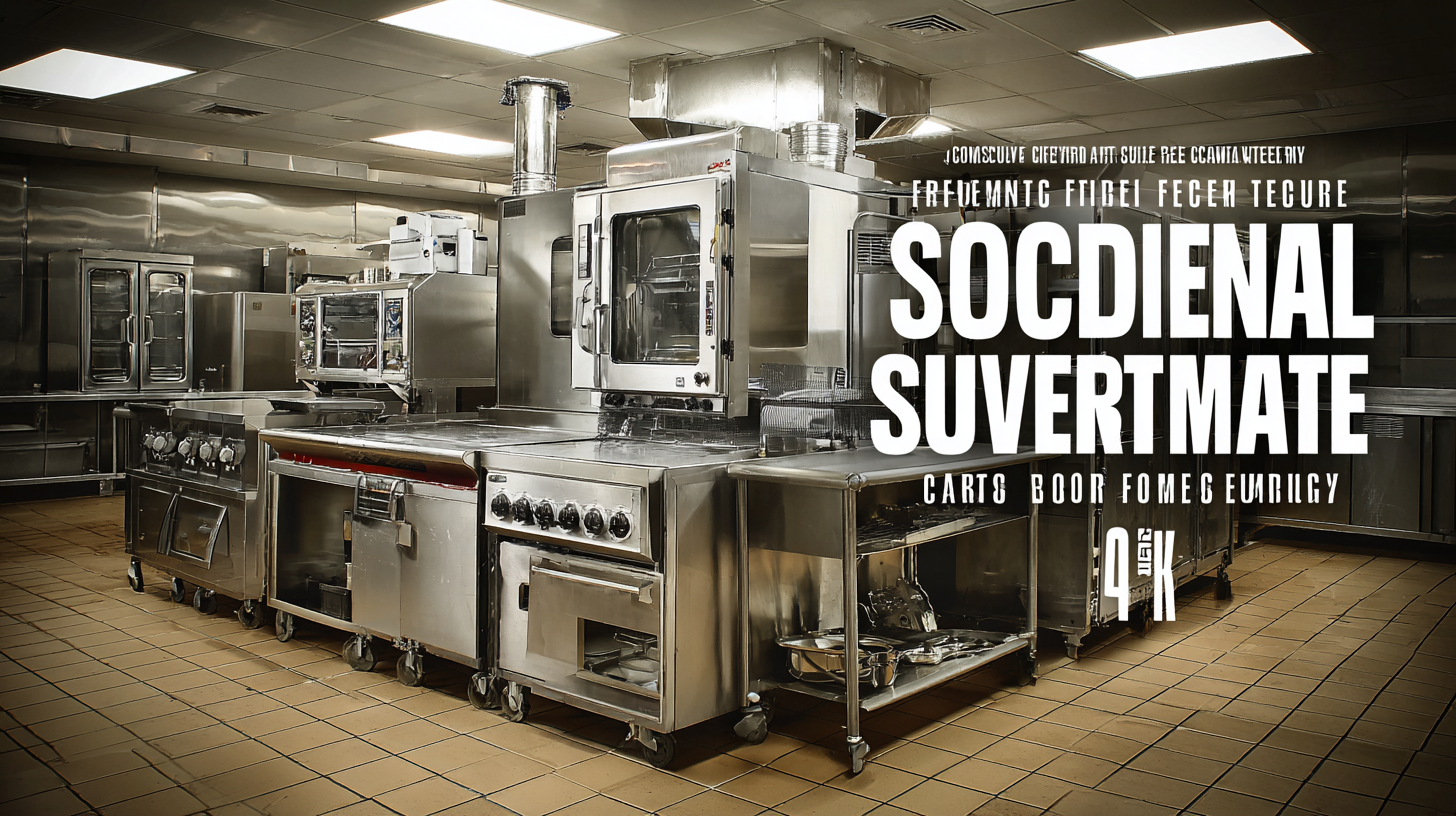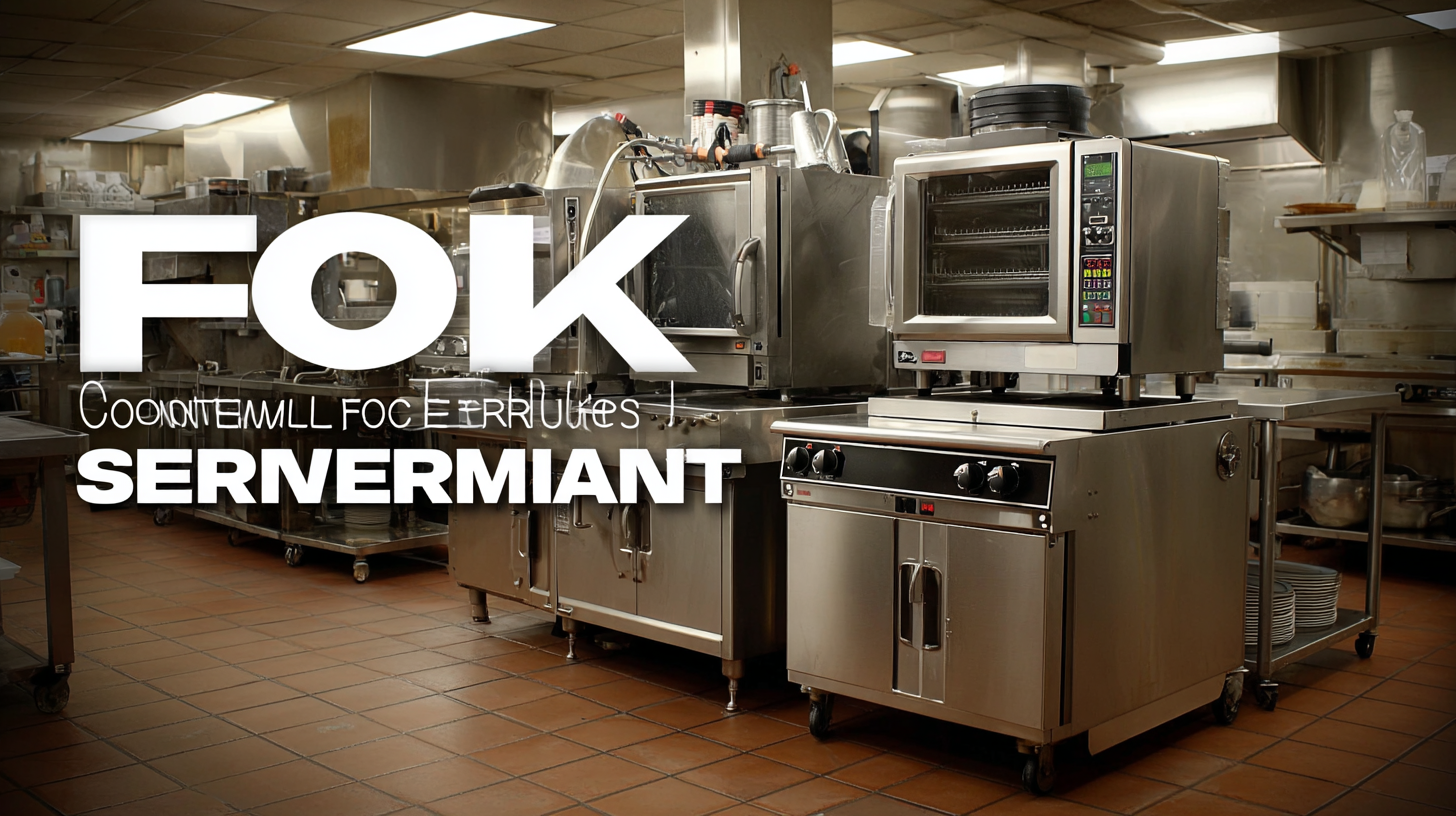5 Essential Features of the Best Commercial Food Service Equipment for Your Business
In the competitive landscape of the food service industry, the choice of Commercial Food Service Equipment can significantly influence a business's operational efficiency and customer satisfaction. According to a report by IBISWorld, the commercial kitchen equipment market is projected to reach $14 billion by 2025, driven by an increasing demand for high-quality food service solutions. Businesses are increasingly investing in advanced equipment that not only ensures food safety and consistency but also enhances energy efficiency and reduces labor costs.

As operators navigate the complexities of modern culinary demands, understanding the essential features of the best equipment becomes crucial. This blog will explore five key attributes that not only ensure optimal performance but also align with industry standards, ultimately leading to a more successful and sustainable food service operation.
Understanding Durability: The Backbone of Quality Food Service Equipment
When it comes to commercial food service equipment, durability stands out as a critical feature that determines the longevity and success of your investment. Quality equipment is subject to daily wear and tear, from high temperatures to heavy loads, and without exceptional durability, you may find yourself facing frequent repairs and replacements. This not only disrupts your workflow but also impacts your bottom line. Therefore, selecting equipment made from robust materials, such as stainless steel or heavy-duty plastics, is vital to ensure that it can withstand the rigors of a bustling kitchen environment.
Moreover, the design and craftsmanship of food service equipment play a significant role in its durability. Equipment that features seamless welds, reinforced structures, and high-quality finishes tends to have a longer lifespan. Brands that focus on high standards in manufacturing often provide warranties that reflect their confidence in durability, assuring businesses that they are making a sound investment. Prioritizing equipment that combines functionality with resilience means fewer headaches down the line, allowing you to concentrate on what really matters—serving great food and keeping your customers satisfied.

Efficiency Matters: Choosing Equipment That Speeds Up Your Operations
When it comes to running a successful food service business, the efficiency of your operations is paramount. According to a report by the National Restaurant Association, 53% of restaurant operators believe that having the latest technology and equipment is essential for maintaining efficiency and meeting customer expectations. This underscores the importance of investing in commercial food service equipment that not only fulfills your immediate needs but also enhances productivity in the long run.
Key features to prioritize include rapid cooking capabilities, multifunctionality, and ease of cleaning. High-speed ovens, for example, can reduce cooking times by up to 60%, allowing staff to serve customers more quickly and improve overall turnover rates. A recent study by Foodservice Equipment Reports indicated that businesses using equipment with smart functionality experienced a 20% increase in operational efficiency, showcasing the benefits of embracing advanced technology. Furthermore, equipment that simplifies maintenance tasks, such as self-cleaning options, can significantly reduce downtime and labor costs, enabling your team to focus on delivering exceptional food and service. Prioritizing these efficiency-driven features will not only streamline your operations but also enhance your profitability in the competitive food service landscape.
Efficiency Matters: Choosing Equipment That Speeds Up Your Operations
Versatility in Function: Why Multi-Use Equipment Is a Must-Have
When it comes to equipping your commercial kitchen, versatility is a game changer. Multi-use equipment allows restaurants and food service operations to maximize their space and streamline their processes. For example, a versatile oven can perform multiple functions — baking, broiling, and even smoking — making it an invaluable asset. This flexibility not only saves precious kitchen real estate but also reduces the need for multiple appliances, ultimately cutting costs on both equipment and maintenance.
Furthermore, the ability to adapt to different cooking methods and menu changes can significantly enhance efficiency. With the fast-paced nature of the food service industry, having equipment that can pivot to prepare various dishes can keep up with customer demand without compromising quality. Investing in multi-use tools also encourages culinary creativity, as chefs can experiment with different cooking techniques and flavors without being constrained by single-function appliances. This adaptability is essential in a competitive market where unique offerings and quick service can set a business apart.
Energy Efficiency: Saving Costs and Supporting Sustainability in Food Services
In today's competitive landscape, energy efficiency has emerged as a pivotal factor when selecting commercial food service equipment. The rising costs of utilities combined with an increasing demand for sustainable practices have compelled businesses to seek out solutions that not only save money but also align with environmental goals. Equipment designed with energy-efficient technology significantly reduces energy consumption, which translates to substantial savings on monthly utility bills. Moreover, utilizing energy-efficient appliances can enhance the overall operational effectiveness of a food service establishment.

Investing in energy-efficient equipment also positions businesses as responsible stewards of sustainability. Consumers are increasingly drawn to brands that demonstrate a commitment to eco-friendly practices, and this can influence purchasing decisions. From Energy Star-rated appliances to efficient cooking methods that minimize waste, the integration of these features showcases a business's dedication to reducing its carbon footprint. As companies aim to innovate and elevate their operations, embracing energy efficiency in food service equipment becomes not just a practical choice, but a crucial step towards building a more sustainable future.
User-Friendly Design: Enhancing Employee Productivity with Intuitive Equipment
When it comes to selecting commercial food service equipment, a user-friendly design can greatly enhance employee productivity. Intuitive equipment not only streamlines operations but also minimizes the learning curve for new staff members. For instance, devices with simple interfaces and clear instructions can dramatically reduce the time it takes for employees to become proficient.
Tip 1: Look for equipment that features touch screens and preset programs. These tools can simplify complex processes, allowing your staff to focus on food preparation rather than navigating complicated machinery. Additionally, ergonomic designs can help reduce physical strain, empowering employees to perform their tasks efficiently without discomfort.
Tip 2: Invest in equipment that allows for easy cleaning and maintenance. User-friendly designs often include removable parts or non-stick surfaces that facilitate quick sanitization. This not only boosts productivity during peak hours but also ensures that hygiene standards are consistently met, creating a safer environment for both staff and customers.
